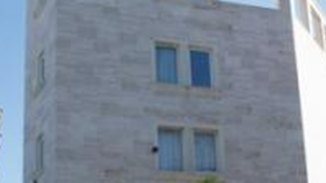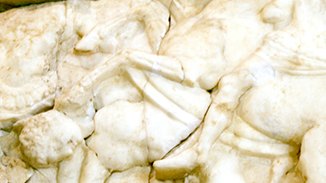

The Asclepium was since the ancient times the most famous monument of Kos. It was located close to the ancient city, and was full of marvelous statues, works of famous artists.

Around the middle of the 6th century BC, the Agora of Athens was founded on the northwest of the Sacred Hill of Acropolis. For the following four centuries, it has been the center of the social and financial life of the city. Around the Agora, various public buildings and shrines were erected.

The Acropolis hill was the site for the most important and glamorous temple of the ancient city, dedicated to Athena, the protector godess of the city. This sacred site is connected to the most important myths of ancient Athens, the great religious ceremonies.

Plato’s Academy has been the meeting point of all the greek philosophical minds of the ancient times, and still maintains its glamor, attracting thousands of visitors.
__list.jpg)
The Military Museum of Rethymno is situated on the southern tip of the Municipal district of the village of Chromonastery , 11klm southeast of Rethymno and on the northern rims of mountain Vrysinas, at an altitude of 360m. From a historical viewpoint, Chromonastery is one of the most remarkable hist

The archaeological collections was recently enriched with the generous offer of coins and numerous findings of various periods, that Adonis Kyrou had collected from all around the island, as well as from other places. A significant number of pictures and various ecclesiastical exhibits also comes from collection, and offers.

The house he lived in, where he wrote and died, after being destroyed by the WWII bombardments, was later restructured and still exists to this day. In Solomos’s house, the Company of Corfu Studies founded the Centre for Solomos Studies, which operates as “Solomos Museum”.

The Cycladic Art Museum was founded in 1986, in order to house the collection of exhibits of Cycladic and Ancient Greek art, of Nikolaos and Ekaterini Goulandri.

The Thessaloniki Museum of Byzantine civilization presents various aspects of life during the byzantine and metabyzantine period: Art, ideology, social organization and religion.

The Folkloral museum of Corinth was founded in 1976, in order to locate, maintain and exhibit folkloral material. The extended collections contain women’s and men’s outfits from many parts of Greece, as well as other handicrafts.

The Alexandroupoli Ecclesiastical Museum houses the collection of ecclesiastic objects that were collected from the churches and monasteries of the Alexandroupoli Metropolis.

The National Archaeological Museum of Athens is the biggest museum in Greece, and one of the most important ones worldwide.The rich collections, with more than 11.000 exhibits, offer the visitor a complete image of the ancient Greek civilization..

The visitor becomes acquainted with the arts of ancient Chios, understands the history and topography of the island, and realizes the island’s importance during the ancient times.

The Polygyros Archaeological Museum houses exhibits from all over Chalkidiki.

The exhibits of the museum are very important, and consist of sculptures from Livadeia and Cheronea, ceramics from prehistoric and historic locations around Cheronea, Elateia,coins and weapons from the Tomb of Macedonians and the mass graves of Thebians in Cheronea.

The Tegea Archaeological Museum is a place where the visitor can enjoy works belonging to the highest inspiration times of ancient Greek sculpture.

Rhodes Archaeological Museum contained prehistoric and Mycenaean artifacts, jars of the Geometric, Archaic and Classic periods, sculptures, writings, a collection of rhodian sealed jars, coins, a collection of the byzantine and medieval era as well as a folklorar collection.

The Piraeus Archaeological Museum offers the visitor a complete image of the city’s history, which was marked by great sevelopment during the ancient times, both as a commercial center of the eastern Mediterranean, and also as a naval base of ancient Athens.
1039 Ε 6061 01515 00